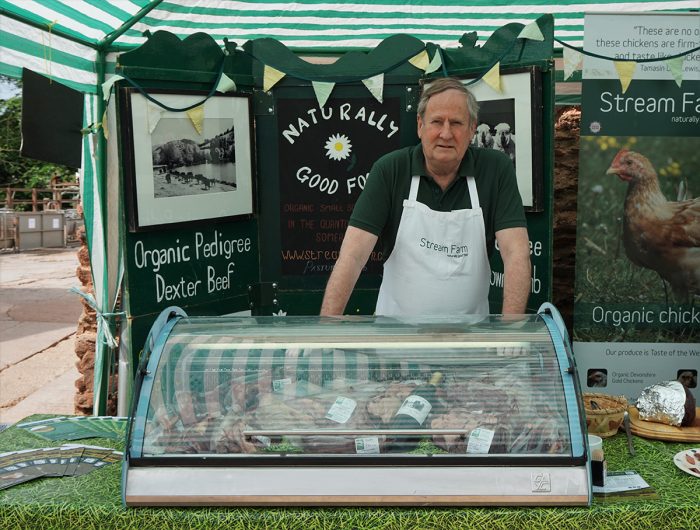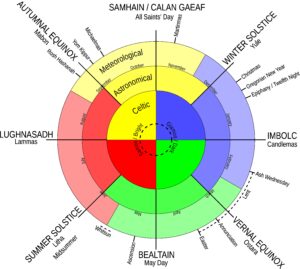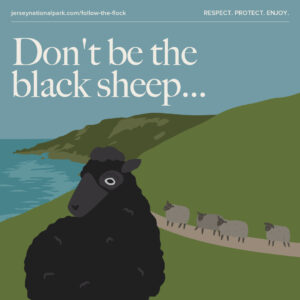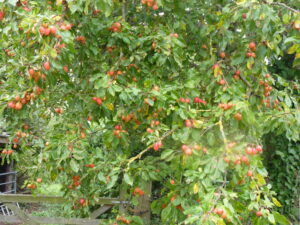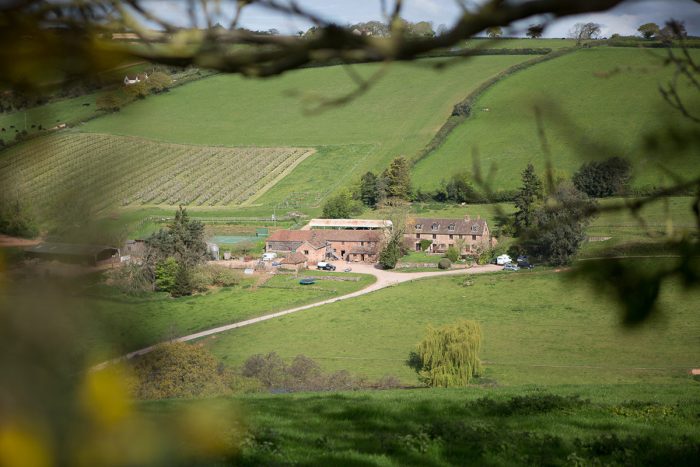
SHARE FARMING by James Odgers
James and his family moved to Somerset in 2002 to establish nine traditional farming businesses upon which to train up new entrants into farming. They had first to learn how to farm themselves, having no background in farming. They have seen more than 25 families come and go since then and the farm is now an award-winning brand in the South West of England.
Faith in the Soil is a short, award-winning film made for James and Henrietta and their family, pro bono, by the independent production company, Candour Creative.
The film covers several different themes that grew out of their experiences of farming organically for nearly 20 years in the Quantock Hills.
It is their hope that others will adapt these themes, or some of them, for use on their farms or estates. They believe that these themes could provide one route towards a regeneration of farming in the UK and, just as importantly, of rural communities and the people who live there.
——
OUR BACKGROUND
We have spent some 37years addressing the breakdown of rural and urban communities across the developing world in very practical ways and always at a grassroots level.
For nearly 15 of those years, we also had the opportunity to assist many women in South London who were on benefits to encourage each other to start up microbusinesses, to have the dignity of being responsible for their own economic activity and to begin to rebuild a sense of community.
In part encouraged by our experience with these women, their zeal and determination, and their desire to help each other succeed, we decided in 2002 to turn our attention to the tragic degeneration of healthy village life in rural England.
When we looked at how best to apply ourselves to that issue, we swiftly saw that the shape of the farming industry (as it has come to be known so very sadly) was at the heart of what needed to change. So, we found a suitable 250-acre farm and started from scratch with plenty of enthusiasm but no knowledge of farming and none in our blood.
For the first few years we learned for ourselves the emotional and physical intensity of farming. The loneliness and isolation of the average farmer was all too apparent at times as well (one ‘agricultural worker’ – what an expression! – commits suicide every week in the UK and 88% of farmers under 40 rank poor mental health as the biggest problem facing farmers today).
And yet, we lived in the most beautiful of natural habitats and answered only to ourselves.
What had gone wrong; surely such a life should be idyllic?
What is lacking, of course, is people.
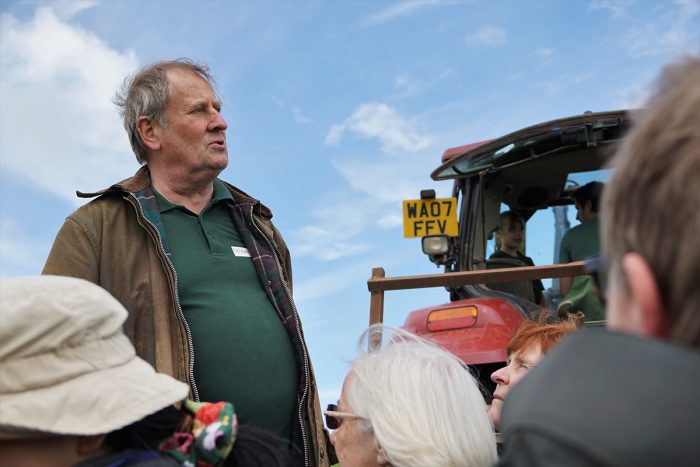
Conventional farming has, in the main, found itself doing all it can to reduce the numbers of people that are needed, to increase the size of each farm, to treat farming purely as a self-contained commercial venture with only a rare glance, often, at the well-being of the villages nearby (although there are, of course, many notable exceptions), and to operate in an increasingly intensive and mechanised fashion.
And still, all but some of the largest farms depend on state subsidies for their survival. And whilst the land has suffered more and more under these seemingly unavoidable conditions, the villages have gradually lost their young – and their hearts.
A view from Ezra and Martha:
‘Farming had always been an interest that my family and friends teased me about, given that I never came from a farming background. Living with James and Henrietta at the Farm gave me a deeper understanding of how something I was passionate about, could in fact be central and essential to society! Not just a dead-end career or menial task.
‘While with James and Henrietta for 18 months, I learnt, of course, how to farm and market sheep, cattle, chickens etc… in very innovative ways, but far more than that, I learnt the ‘why’ of small-scale family farming. How families farming in a coordinated way, cooperating with each other, can produce food with a consistent quality and have a sustainable, competitive and relevant place in the agro economy of our modern world.
‘After my time at the Farm, I moved back home to Zimbabwe, where my wife and I now work with over a hundred poor families in several rural communities bringing together many small, family-scale producers to supply the growing African markets.’
We knew from the outset almost intuitively (although I had long ago read and taken on board the message of Rachel Carson’s Silent Spring) that the use of chemical fertilisers and sprays on the land, the prophylactic use of antibiotics and other standard interventions in conventional livestock systems, the intensive farming, and the long distances that so much of a conventional farm’s produce has to travel before it reached the ultimate consumer, were wrong in principle.
Many of these practices were doubtless forced upon an industry that reckoned it could only make a profit with the help of subsidies and grants. We also had to ensure that the model addressed the increasingly important issue of climate change so we gradually set off to sequester more carbon than our entire operation emitted.
There is still much misinformation out there on this issue but we became carbon negative – or vanishingly close to it – and the health of the soil, of the farmers and of the ever-increasing and varied wildlife confirmed this.
Encouraging New Entrants
As we converted to organic, we gradually established eight traditional, family-scale farming businesses such as pedigree beef cattle, sheep and chickens. None was arable: we found when we tried that 20 years ago that there were too many factors that affected the price of what is produced that were outside the control of a small-scale farm– so that was not something that we wanted to model to newcomers. Today, with a more premium product such as organic milling wheat, we feel it would be feasible to set up a micro bakery (and to have the straw for bedding).
Our main focus was on the 65% of all farmland in the UK (and across the world) that is grassland. Such land provides livelihoods for around a billion of the world’s poorest people (in the form of meat and dairy).
And then we invited new entrants to farming, mostly from cities, to come and learn how to farm for themselves as we had begun to do. And the people began to come – or to come back, one could say – to the countryside.
Even after many years, my knowledge of farming generally is of course pretty slight compared to many who have had farming in their blood for generations; my expertise, if I have one, is primarily in business start-up. And certainly, many of those who started down the farming path with us now leave us far behind!
But as the years went by, we trained up over 30 couples and singles on the farm and many of these have gone on to take their experience elsewhere and have begun to apply it on other farms in different forms across the UK and abroad.
One such example, The Earth Beneath Our Feet in South Africa, is briefly featured in the film. Another – see above – is one of two in Zimbabwe and there are farming ventures assisting in the rehabilitation of ex-heroin addicts in North East India and Hong Kong which have their unlikely genesis on the Farm.
Even where those who came through did not move on to farm for themselves or help others to do so, almost all have taken on some of the community-building and restoration themes that have enabled more people to have a real sense of belonging to something worthwhile.
A view from Will and Charlotte:
‘My [Will’s] grandparents had a farm in Wales, which sold when I was young. I had always dreamed of continuing farming myself, but couldn’t see a way to do so, particularly without access to land. We were both working in London when we met James and Henrietta in 2015 and moved from London to the Farm in 2017.
We were there for a little over 3 years and learned almost all we now know, including how to run a number of different farming businesses through share farming. Share farming there gave us a really strong foundation, and the confidence to farm for ourselves.
We have continued farming and now manage and share-farm on a 250-acre organic farm in the South West.’
We never thought we could invent something new. Rather, our approach was to find a way that replicated the best co-operative elements of a traditional village and thus increase the numbers of people earning a sufficient livelihood from a given acreage of land, with the farmers helping each other in the ups and down of their respective businesses and the landowner sharing in the risks and rewards of each.
Our overseas experience of village microcredit programmes across Asia and Africa, in particular, gave us the courage to build a local market and to establish a common identity for all the businesses by having all of them sell under a common brand name as if we were an output co-operative. But, perhaps most importantly, we avoided the supermarkets with their predatory pricing policies which have done more than any other factor to denude – no, to ruin – rural communities.
Ownership
In a pre-industrial village in England, each family not employed by one of the larger landowners would have had their own economic activity and the dignity that comes with ownership rather than employment. The businesses would largely have sold their output locally and would have enabled parents not to have to travel for their jobs as became the norm in the UK with the Industrial Revolution before any other country – a model we exported all over the globe. The share farming, or land sharing, agreements we developed address that issue without the need for the farmers to own the land on which they run their respective businesses. Farmers share gross income with the provider of the land and thus share most of the same aims and the same risks – and they have that same dignity.
The agreements are largely based on the principles behind those used by the mighty Muhammad Yunus of the Grameen Bank in Bangladesh and others. At their heart is trust – that trust, and sense of belonging, that used to come with living and working next to, or near, the other inhabitants of a village, buying and selling from and to each other often, and sharing many of the same hopes and fears.
We have seen all over the world that, where trust exists because of a communality of interest between all those involved, all participants rise to the occasion and their lives become much more fulfilling, if not transformed.
Now, to establish a credit union in England, there is a legal requirement that there be a ‘Common Bond’ between all members. That bond is to reinforce the trust element that is crucial for an organisation that uses its members’ savings to lend to other members.
The bond can come from a shared background in the armed services, say, from all the members having lived in a particular geographic area for a long period of time, from all being involved in a particular occupation or from all sharing a faith.
We applied this requirement, which we believe to be critical to our thinking on the shape of the model, and we used our strong Christian faith as a foundation at the Farm to form a Common Bond between all the farmers. All of our work across the globe over 37 years has stemmed from the hard adventure of that faith and we could not recommend it more highly when taken seriously – as it has been by many millions of people over 2000 years all over the world; but that is another story!
The share farming agreements – and they have been more than adequate in both urban and rural settings – are two pages long rather than the 30 to 60 pages common in the farming industry.
There is a mediation provision but that has never needed to be used. In our direct experience of assisting in the start-up of many hundreds of very small urban businesses by making thousands of small but increasing loans to traditionally uncreditworthy borrowers, these loans, all based on trust (and in their case, expressly stated to be not legally binding), have had a 100% repayment rate. Yunus once said to me that if a loan is not repaid that is the fault of the lender for structuring it wrongly. That took a while to sink in!
Has the model been a success?
It took many years to develop it and we are sure there is a long way to go and that others will be far better able to refine it than we have been.
But yes, we think it is now fit for purpose. Over the years, it was rare that we sat down for a communal meal fewer than 15 to 20; enough, surely, for the core of a flourishing village – and our apple-picking days involved around 60 friends (encouraged to come by the promise of fine steaks!) and our open days every year attracted well over 1,000 people. Groups of school children came to play and to learn new skills and groups of adults came, some to see what was going on, others to do leadership training on the lake, with courses run by a local family. Our farmers began to join local cricket and hockey teams, formed teams for pub quizzes, took part in the harvest suppers and services, set up mums’ and toddlers’ groups, enrolled in the local schools, and, some say, reduced the average age of the inhabitants of the nearby village by half!
We used the Farm to train up new entrants who would stay for an average of two years; thus, for longer periods of time, there would need to be some changes to some of the businesses; but the scale of the majority of them was all we needed for training purposes.
Broiler chickens, for instance, was a full livelihood pretty quickly. We imagined for some time that, to achieve a full livelihood from each of the sheep and cattle businesses, on the other hand, they would have required more land than we had available – even though all the livestock share the land as if it was a traditional, albeit managed, common.
However, we have seen gradually that with ever-more-careful management of the grazing of organic fields and as the soils respond accordingly, the land can provide for more animals at any given time – so stocking density continues to be able to increase – although not to the historical levels of the once 60m bison out on the American prairies where the long grasses could grow 10 feet tall!
We would have loved to start up other small farming-related businesses as well – a micro dairy, a sourdough bakery, indigenous crayfish and a restaurant being high up the list (well, the latter, high up on my list, anyway!). The ones we did start were just ones that I reckoned on the back of an envelope at the outset (except for the bees) could possibly turn a useful profit in due course – so the sky is the limit on other forms of economic activity.
We were keen, though, to stick to farming rather than diversify into other enterprise-stacking activities such as Airb&b, office space rental, caravan storage, weddings, ecotourism etc. to all of which, again, conventional farmers have reckoned they had to look to make up the shortfall in their profitability. All are potentially worthwhile, of course, in their place.
Those were rich years at the Farm (we left it in 2021 for pastures new). Was there enough profit from enough businesses to provide a sufficient standard of living for all the farmers who were on the land at any one time? Yes, there either was – or there could have been – if farmers had stayed on and become (even) more proficient. Yet, our focus was not just on training but also on the well-being of the community on the land; so the model is as much about one’s definition of success as anything, and for each person to decide in their turn what they want out of life – and what would be sufficient for them and for others who might join with them. To belong, really to know you belong, is, after all, priceless.
The Nguni tribe in Africa say this: ‘we are made human by other humans’. Our farm made a start. Others, far better and more experienced than us, can take the ideas forward now.
Find Out More about Faith in the Soil
If you want to consider farming this way yourself, and you own land or farm already, or if you have long really thought about joining such a farm if only it existed – please look at our website – www.faithinthesoil.co.uk and we can link you to the film and several essays I have written to expand on the principles we sought to apply.
We would be delighted to hear from you and will do our best to be in touch with you shortly.
